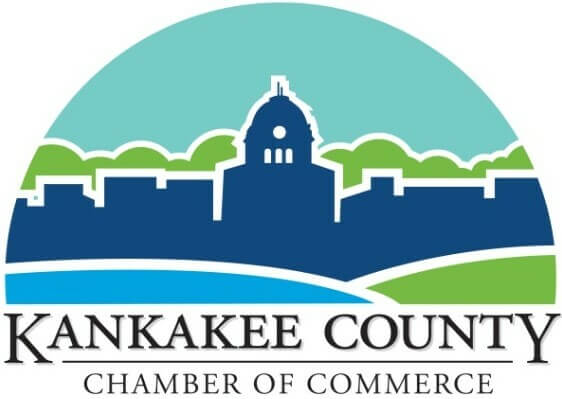The Digital Transformation Trends Shaping Modern Business Strategy
In today’s accelerated economy, digital transformation is not just a technology upgrade — it’s an enterprise-wide mindset shift. Organizations across industries are redesigning their operations, culture, and decision ecosystems to thrive in a world defined by data, connectivity, and customer-centric agility.
TL;DR
Modern digital transformation goes beyond adopting new tools. It’s about integrating data intelligence, automation, cloud-native workflows, and customer experience design into every decision. Companies that structure transformation around measurable value creation — not just tech adoption — gain resilience, agility, and lasting competitive advantage.
1. The Five Core Trends Defining Digital Transformation
1. Cloud-Native Infrastructure
Businesses are shifting to scalable, multi-cloud systems that reduce IT costs and accelerate innovation. Hybrid cloud adoption, supported by providers such as Google Cloud, enables global teams to deploy faster while maintaining data security.
2. AI-Powered Decisioning
From predictive analytics to autonomous workflows, artificial intelligence now drives forecasting, personalization, and efficiency across sectors. Firms adopting AI responsibly — like using IBM watsonx for transparent data modeling — are redefining their strategic planning.
3. Automation and Workflow Orchestration
Automation is moving from back-office processes to customer-facing experiences. Leading organizations use workflow platforms to unify content creation, document management, and collaboration. For example, companies that integrate document tasks within a single digital workflow — such as creating, signing, and securing files — save significant time and reduce errors; to see how this works in practice, check this out.
4. Data Interoperability and Governance
Open data ecosystems and APIs allow systems to communicate seamlessly. Strong governance ensures data integrity and compliance — especially under frameworks like ISO 27001.
5. Human-Centered Digital Cultures
Transformation succeeds when people embrace technology, not fear it. Training programs, design thinking, and flexible work models foster continuous learning and innovation. Platforms like LinkedIn Learning and culture-first leadership frameworks have become catalysts for digital fluency.
2. Quick Checklist: Is Your Business Digitally Mature?
✅ Cloud infrastructure supports real-time scaling.
✅ Data flows freely across departments with clear ownership.
✅ Automation replaces repetitive manual tasks.
✅ Employees are empowered with digital upskilling.
✅ Decisions are data-informed and customer-driven.
✅ Security and compliance are continuously monitored.
✅ Leadership measures transformation outcomes — not just tool adoption.
If you checked 5 or more boxes, your organization is positioned to compete in a digital-first economy. If fewer, focus on foundation layers like data strategy and workflow automation before scaling advanced analytics.
3. How to Drive Successful Digital Transformation (Step-by-Step)
Step 1. Define Business-Centric Outcomes
Start with measurable goals — e.g., reducing processing time by 30% or improving NPS scores — not with specific technologies.
Step 2. Map Current Systems and Friction Points
Audit processes and identify where manual bottlenecks slow performance. Tools like Miro can help visualize operational workflows.
Step 3. Prioritize Value-Driven Initiatives
Rank initiatives by ROI and stakeholder impact. Begin with high-value, low-complexity projects before tackling deep system redesigns.
Step 4. Build the Right Digital Architecture
Adopt modular, API-driven infrastructure to future-proof your stack. Consider platforms like AWS for scalability or Snowflake for unified data access.
Step 5. Empower People and Culture
Invest in reskilling and cross-functional collaboration. Encourage experimentation through agile frameworks such as Atlassian Jira.
Step 6. Monitor, Learn, and Iterate
Use key performance indicators (KPIs) to assess adoption, cost reduction, and user satisfaction. Embed continuous improvement loops into the transformation roadmap.
4. Key Enablers: Technology + Governance + People
|
Enabler |
Description |
Business Impact |
|
Cloud Platforms |
Provide flexibility and scale without hardware constraints. |
40–60% faster deployment cycles. |
|
Automation Tools |
Streamline workflows and reduce human error. |
Up to 25% cost savings annually. |
|
Data Analytics |
Uncover insights that inform strategy and customer engagement. |
3x improvement in decision speed. |
|
Cybersecurity |
Protect digital assets and ensure compliance. |
Enhanced trust and risk resilience. |
|
Cultural Agility |
Empowers employees to adapt to rapid change. |
Increases retention and innovation capacity. |
5. FAQ — Your Digital Transformation Questions Answered
What’s the difference between digitalization and digital transformation?
Digitalization converts analog processes into digital ones. Digital transformation redesigns the business model itself to leverage digital potential for growth and innovation.
How long does transformation typically take?
Most mid-size organizations experience 18–36 months of iterative change. The key is to start small, prove value, and expand.
What KPIs should leadership monitor?
Measure operational efficiency (cycle time), customer satisfaction (NPS), innovation output (new features launched), and employee engagement.
Do small businesses benefit from digital transformation?
Absolutely. SMEs using cloud and automation tools can achieve enterprise-level efficiency at a fraction of the cost. Platforms like HubSpot make this accessible without major capital investment.
How does AI fit into a digital strategy?
AI augments decision-making, enhances personalization, and predicts business outcomes. Integrating it ethically and transparently ensures trust and compliance.
6. Glossary
-
Cloud-Native: Systems built to run in distributed, scalable cloud environments.
-
Automation: The use of technology to perform tasks with minimal human intervention.
-
Data Governance: Framework ensuring accuracy, security, and compliance of enterprise data.
-
Workflow Platform: Software that integrates multiple business tasks — from document creation to approval — into a unified digital system.
-
Agile Framework: A project management approach emphasizing flexibility, iteration, and user feedback.
-
Digital Twin: A real-time virtual replica of a physical asset used for monitoring and optimization.
7. Final Thoughts
Digital transformation is no longer a project — it’s a perpetual discipline. The winners of the next decade will be organizations that continuously integrate human creativity with intelligent automation, design data-driven decision systems, and align every initiative to customer and employee value.
Transformation succeeds when it’s structured, measurable, and people-centered. Start by defining intent, clarifying brand purpose, and implementing unified workflows that scale innovation across the enterprise.
Discover the vibrant business community of Kankakee County and unlock opportunities for growth and collaboration by visiting the Kankakee County Chamber of Commerce today!
This Hot Deal is promoted by Kankakee County Chamber of Commerce.

